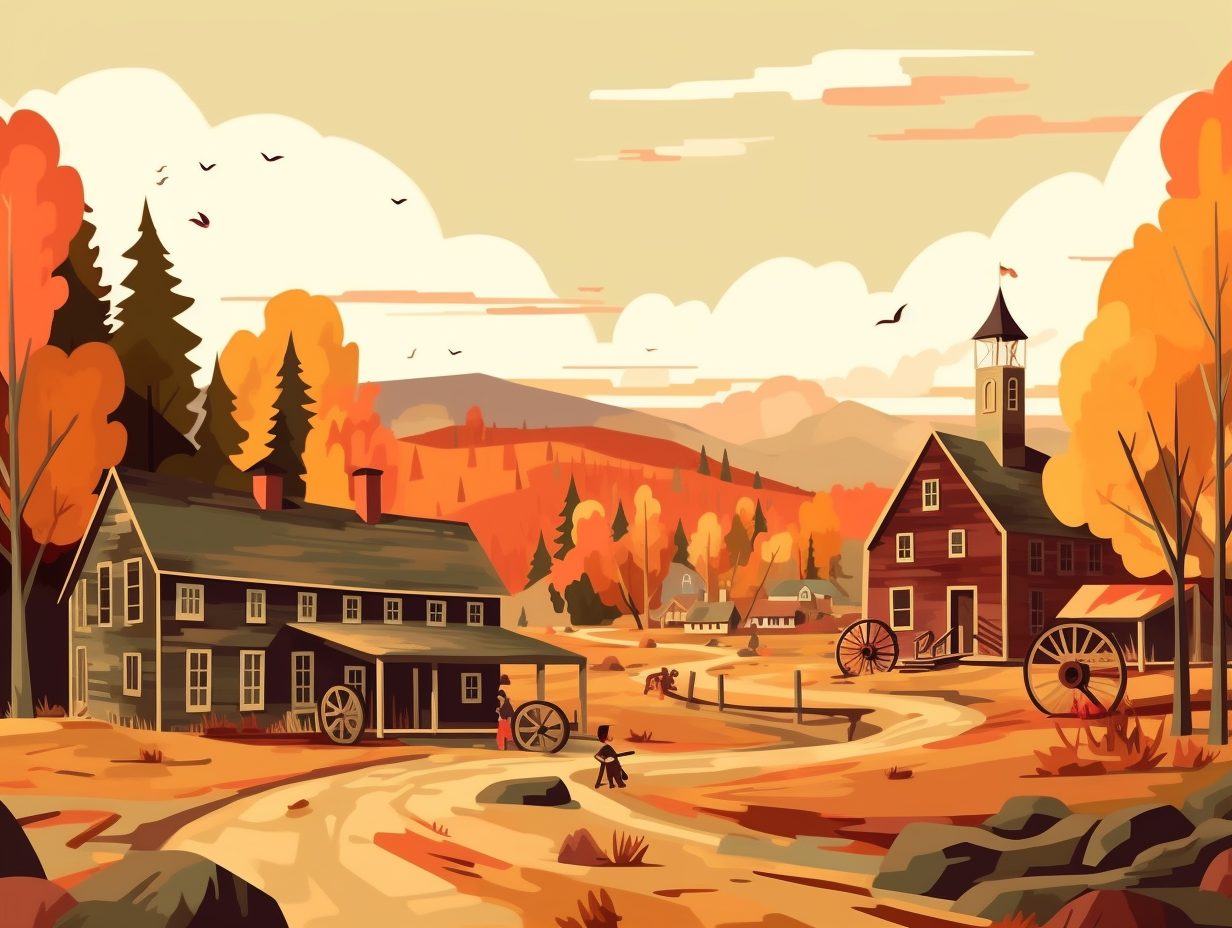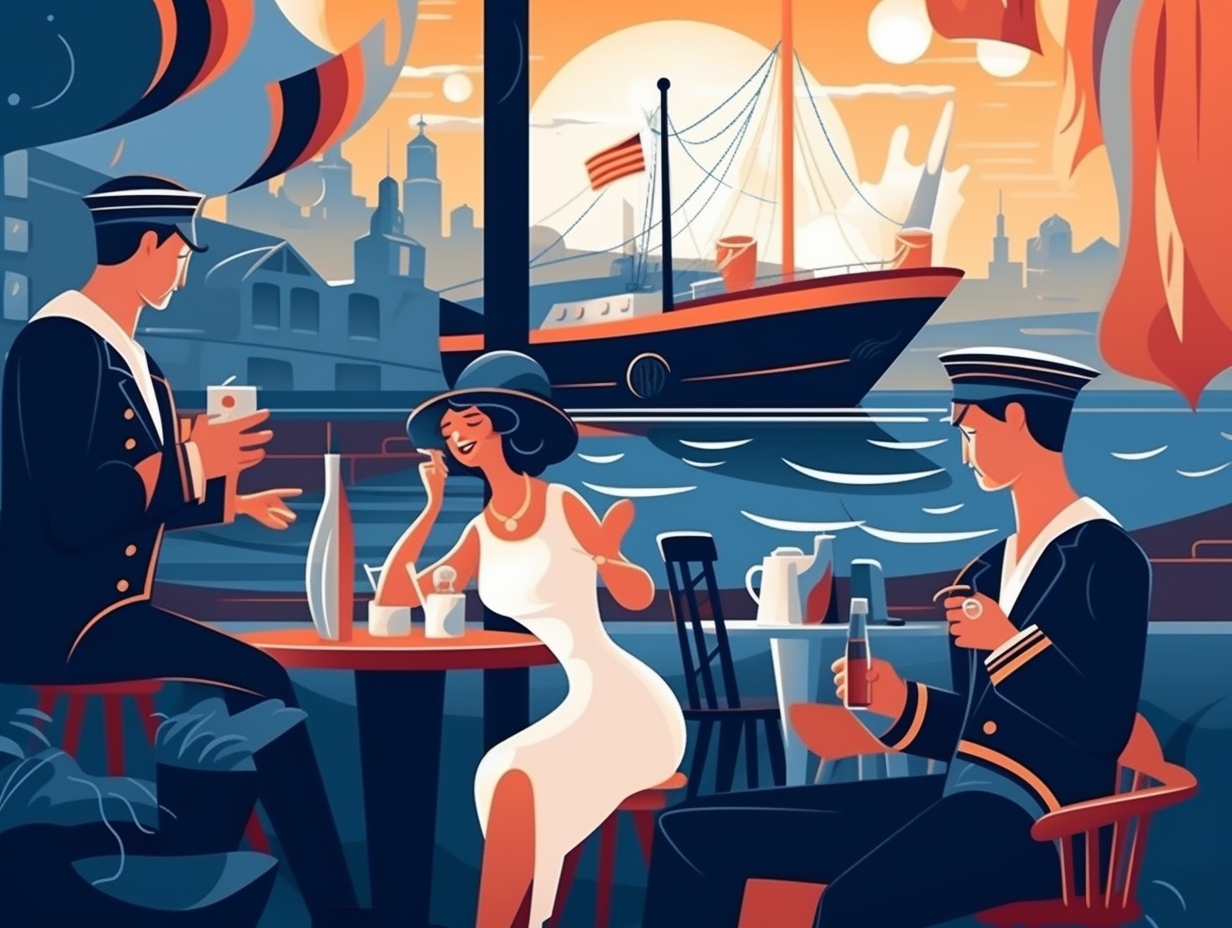Discover the Big Apple's Beginnings: Top 6 Fun Facts About New York Colony You Never Knew

1. Seal of the City's Stylish Duo
Whoever said "don't mix business with pleasure" clearly hasn't met the duo on the Seal of the City of New York: things are always smooth sailing with these two. Get ready to plunge into a meet-cute that dates back to the 17th century: Dexter the sailor and a Lenni Lenape Native American are immortalized on the seal, equipped with a lead plummet and a bow, respectively, and standing on a laurel branch symbolizing peace. Talk about representing both the nautical and native roots of the city—and doing it in style!
Source => walkaboutny.com
2. Beer: The Ultimate Tax Booster
Whoever said "in beer we trust" must have visited the Dutch Republic during the Eighty Years' War: At the height of the conflict, a staggering 80% of all provincial taxes in Holland came from beer, making it the most heavily taxed commodity and the not-so-frothy foundation of their economy.
Source => armstronghistoryjournal.wordpress.com

Discover the intriguing tale of Jane Walford, a 17th-century New Hampshire healer accused of witchcraft, who sued her accuser and became one of the first women to own land in the New World. ✨🧹📜
=> Fun Facts about New-Hampshire-Colony
3. From Tavern to City Hall
Before there were a hundred Starbucks on every street corner and gossip-filled office water coolers, New Yorkers of the 17th century had their own place to grab a cheeky swig and chitchat: The Stadt Huys was the first city hall in New York City, originally built as a city tavern in 1642 by the Dutch. It only took them 11 years to realize that their most happening watering hole would make a great spot for politics; by 1653, the tavern-turned-city-hall became the center of governmental and political life in the colony of New Amsterdam until its demolition in 1699.
Source => en.wikipedia.org
4. Wall Street's Literal Wall
Long before Scrooge McDuck could even fathom swimming in his gold coins, history built Duckburg's ancestor in Lower Manhattan: Wall Street traces its roots to the literal wall erected by Dutch settlers to protect their emerging city from British encroachment and peg-legged pirates. But alas, this barrier couldn't weather the storm of time: It was ultimately torn down, and in its place rose the very birthplace of America's capitalist spirit—culminating in the Buttonwood Agreement of 1792, a pact among 24 brokers that solidified the commission-based framework of stock trading and catapulted Wall Street to financial fame. Today, the New York Stock Exchange reigns as the world's largest by market capitalization, boasting an astronomical sum of over $25.6 trillion as of February 2021.
Source => investopedia.com

5. Ellis Island's Shellfish Buffet
Before New Yorkers were shelling out big bucks for fancy seafood dishes, there was an all-you-can-eat shellfish buffet practically for free: Ellis Island was not just the portal for immigrants, but also a dining hotspot for Native Americans who feasted on its oysters, striped bass, and shellfish, so much so that it was known as one of the three "Oyster Islands" to the Dutch. In fact, archaeological excavations during its restoration work in 1985 found midden pits filled with shells, pottery fragments, and bone remnants, suggesting a bounty of seafood indulgence that dates back centuries.
Source => nps.gov
6. New York's Great Wall Plot Twist
New York had an early version of the Great Wall, but plot twist: it wasn't built to keep out the Huns! The real deal: The Castello Plan, created in 1660, is an important map of New Amsterdam that offers a detailed look into the city's layout, including Fort Amsterdam, streets, homes, businesses, and a wall built to keep the British at bay. It was rediscovered in Italy in 1900 and is named after the Villa di Castello.
Source => dp.la
Related Fun Facts




















